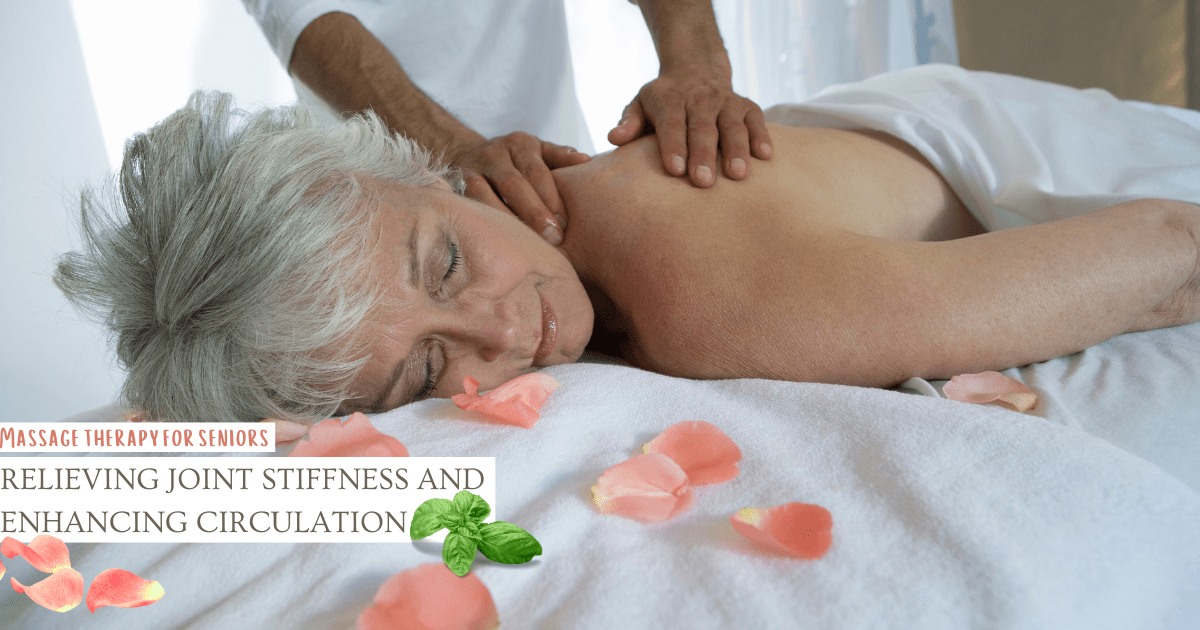Massage Therapy for Seniors: Relieving Joint Stiffness and Enhancing Circulation
The Role of Massage in Senior Rehabilitation
Aging brings about natural changes in joint mobility, circulation, and overall musculoskeletal function. For many older adults, joint stiffness and reduced circulation contribute to pain, decreased independence, and a higher risk of falls.
Physical and occupational therapists, particularly in geriatric therapy settings, often incorporate massage therapy into rehabilitation plans to address these challenges while supporting movement quality and comfort. When used strategically, massage therapy for seniors can help seniors regain mobility, reduce discomfort, and improve their ability to participate in daily activities.
How Massage Therapy Supports Joint Mobility
Joint stiffness in older adults is often linked to arthritis, reduced synovial fluid production, and muscular tightness. These factors limit movement, and importantly, addressing them through techniques like massage can help reduce pain in the elderly. They also create compensatory patterns that can lead to gait deviations and postural imbalances.
Massage therapy, when integrated with physical and occupational therapy interventions, can:

Improve Soft Tissue Elasticity
Gentle kneading and myofascial release techniques help lengthen tight muscles and improve flexibility around joints such as the shoulders, knees, and hips.
Enhance Joint Lubrication
Increased circulation around synovial joints supports fluid exchange, which may reduce friction and discomfort during movement.
Reduce Muscular Guarding
Many seniors unconsciously restrict their movement due to fear of pain. Massage helps calm overactive muscles and encourages controlled, pain-free mobility.
Support Postural Alignment
Addressing soft tissue restrictions can assist with better posture, reducing strain on weight-bearing joints during walking and functional tasks.
For seniors experiencing difficulty raising their arms, transitioning from sit to stand, or maintaining an upright posture, massage can be a valuable adjunct to therapeutic exercise. When combined with targeted stretching and strengthening, massage therapy contributes to smoother movement patterns and improved motor control.
The Circulatory Benefits of Massage for Seniors
Reduced circulation can lead to muscle fatigue, delayed healing, and a greater risk of pressure ulcers. Massage therapy promotes blood flow, oxygenation, and tissue hydration, which are essential for recovery and functional movement. These techniques actively work to improve circulation in the elderly, supporting overall tissue health.
Improved Venous Return
Gentle strokes in the direction of venous flow assist with reducing swelling in the lower extremities, particularly for seniors with conditions such as chronic venous insufficiency or peripheral neuropathy.
Enhanced Oxygen and Nutrient Delivery
Increased circulation supports tissue healing in seniors recovering from joint replacements, fractures, or prolonged immobility.
Reduction in Cold Extremities and Numbness
Many older adults experience decreased circulation in their hands and feet, which affects grip strength and balance. Massage helps warm tissues and improve proprioception, which is critical for walking stability.
Massage Therapy in Occupational and Speech Therapy Settings
While massage therapy is often associated with musculoskeletal recovery, its benefits extend beyond physical therapy applications. Occupational and speech therapists can also incorporate massage techniques to support function in their respective domains.
Occupational Therapy Applications:
Massage can be used to reduce muscle stiffness in the hands, helping seniors with arthritis improve their grip strength and fine motor coordination for tasks such as buttoning clothing or holding utensils.
For individuals recovering from strokes, massage therapy may improve sensory feedback, reducing hypersensitivity or numbness that interferes with daily activities.
Gentle manual techniques can prepare soft tissues for adaptive movement strategies, allowing for smoother transitions in weight shifting and seated postural control.
Speech Therapy Applications:
Orofacial massage can assist with reducing tension in the jaw and neck, benefiting seniors with dysphagia or temporomandibular joint dysfunction.
Soft tissue manipulation around the larynx and cervical region may help with voice production and swallowing efficiency in individuals with neurological conditions such as Parkinson’s disease.
Optimizing Therapy Workflows with Massage Documentation
As therapists integrate massage therapy into rehabilitation plans, proper documentation is essential for tracking patient progress, justifying interventions, and ensuring compliance with regulatory standards.
Maintaining clear records of soft tissue techniques, patient responses, and functional improvements allows therapists to communicate treatment effectiveness to both patients and insurers.
With HelloNote EMR, therapists can efficiently document manual therapy interventions, including massage techniques, within structured SOAP notes. This helps streamline workflow while ensuring that patient progress is accurately recorded. Additionally, therapists can track changes in mobility, pain levels, and circulatory health over time, reinforcing the value of massage therapy in rehabilitation plans.
Clinic owners who use HelloNote EMR also benefit from integrated scheduling, allowing for organized session planning when incorporating massage into treatment routines. With built-in compliance tools, therapists can confidently include massage therapy as part of patient care while staying aligned with best practices.
Final Thoughts
Massage therapy for seniors plays a valuable role in supporting joint mobility and circulation, making it an important component of rehabilitation in physical, occupational, and speech therapy settings. By improving tissue elasticity, reducing muscular guarding, and enhancing blood flow, massage helps seniors regain confidence in their movement and engage more fully in daily activities.
Therapists who integrate massage into their treatment plans can maximize patient outcomes when paired with a structured approach to documentation and workflow management. HelloNote EMR provides the tools needed to ensure that massage therapy interventions are effectively documented, allowing clinics to maintain compliance while delivering high-quality care.
By combining hands-on therapy with an organized clinical management system, therapists can create an environment where seniors receive the best possible support for their mobility, comfort, and independence.

